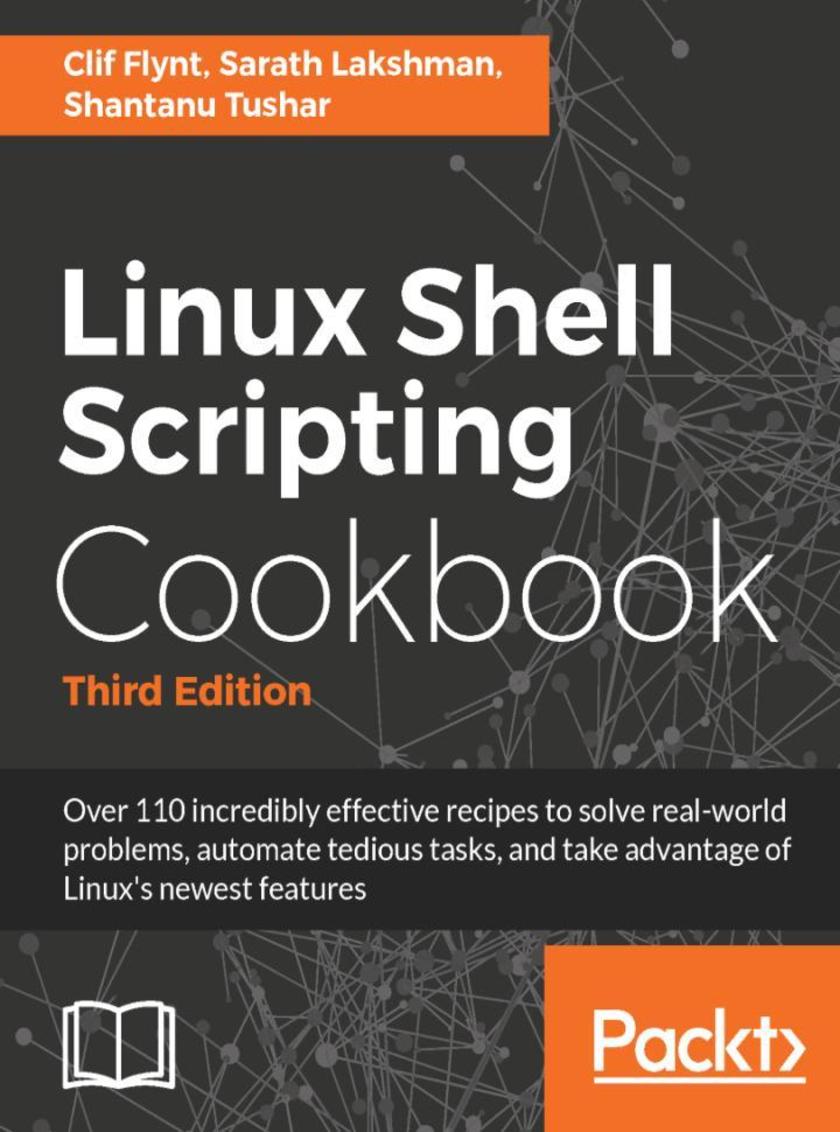
Linux Shell Scripting Cookbook - Third Edition
¥90.46
Do amazing things with the shell About This Book ? Become an expert in creating powerful shell *s and explore the full possibilities of the shell ? Automate any administrative task you could imagine, with shell *s ? Packed with easy-to-follow recipes on new features on Linux, particularly, Debian-based, to help you accomplish even the most complex tasks with ease Who This Book Is For If you are a beginner or an intermediate Linux user who wants to master the skill of quickly writing *s and automate tasks without reading the entire man pages, then this book is for you. You can start writing *s and one-liners by simply looking at the relevant recipe and its de*ions without any working knowledge of shell *ing or Linux. Intermediate / advanced users, system administrators / developers, and programmers can use this book as a reference when they face problems while coding. What You Will Learn ? Interact with websites via *s ? Write shell *s to mine and process data from the Web ? Automate system backups and other repetitive tasks with crontab ? Create, compress, and encrypt archives of your critical data. ? Configure and monitor Ethernet and wireless networks ? Monitor and log network and system activity ? Tune your system for optimal performance ? Improve your system's security ? Identify resource hogs and network bottlenecks ? Extract audio from video files ? Create web photo albums ? Use git or fossil to manage revision control and interact with FOSS projects ? Create and maintain Linux containers and Virtual Machines ? Run a private Cloud server In Detail The shell is the most powerful tool your computer provides. Despite having it at their fingertips, many users are unaware of how much the shell can accomplish. Using the shell, you can generate databases and web pages from sets of files, automate monotonous admin tasks such as system backups, monitor your system's health and activity, identify network bottlenecks and system resource hogs, and more. This book will show you how to do all this and much more. This book, now in its third edition, describes the exciting new features in the newest Linux distributions to help you accomplish more than you imagine. It shows how to use simple commands to automate complex tasks, automate web interactions, download videos, set up containers and cloud servers, and even get free SSL certificates. Starting with the basics of the shell, you will learn simple commands and how to apply them to real-world issues. From there, you'll learn text processing, web interactions, network and system monitoring, and system tuning. Software engineers will learn how to examine system applications, how to use modern software management tools such as git and fossil for their own work, and how to submit patches to open-source projects. Finally, you'll learn how to set up Linux Containers and Virtual machines and even run your own Cloud server with a free SSL Certificate from letsencrypt.org. Style and approach This book will take you through useful real-world recipes designed to make your daily life easier when working with the shell.
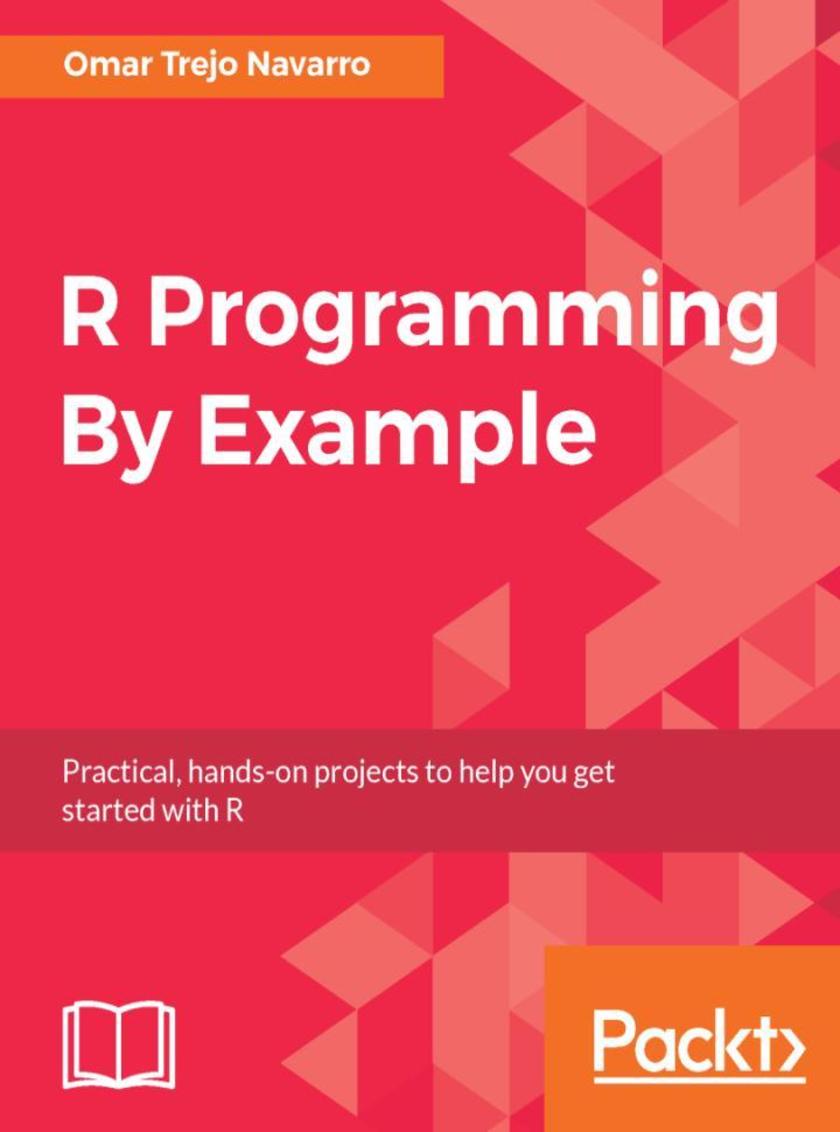
R Programming By Example
¥90.46
This step-by-step guide demonstrates how to build simple-to-advanced applications through examples in R using modern tools. About This Book ? Get a firm hold on the fundamentals of R through practical hands-on examples ? Get started with good R programming fundamentals for data science ? Exploit the different libraries of R to build interesting applications in R Who This Book Is For This books is for aspiring data science professionals or statisticians who would like to learn about the R programming language in a practical manner. Basic programming knowledge is assumed. What You Will Learn ? Discover techniques to leverage R’s features, and work with packages ? Perform a de*ive analysis and work with statistical models using R ? Work efficiently with objects without using loops ? Create diverse visualizations to gain better understanding of the data ? Understand ways to produce good visualizations and create reports for the results ? Read and write data from relational databases and REST APIs, both packaged and unpackaged ? Improve performance by writing better code, delegating that code to a more efficient programming language, or making it parallel In Detail R is a high-level statistical language and is widely used among statisticians and data miners to develop analytical applications. Often, data analysis people with great analytical skills lack solid programming knowledge and are unfamiliar with the correct ways to use R. Based on the version 3.4, this book will help you develop strong fundamentals when working with R by taking you through a series of full representative examples, giving you a holistic view of R. We begin with the basic installation and configuration of the R environment. As you progress through the exercises, you'll become thoroughly acquainted with R's features and its packages. With this book, you will learn about the basic concepts of R programming, work efficiently with graphs, create publication-ready and interactive 3D graphs, and gain a better understanding of the data at hand. The detailed step-by-step instructions will enable you to get a clean set of data, produce good visualizations, and create reports for the results. It also teaches you various methods to perform code profiling and performance enhancement with good programming practices, delegation, and parallelization. By the end of this book, you will know how to efficiently work with data, create quality visualizations and reports, and develop code that is modular, expressive, and maintainable. Style and Approach This is an easy-to-understand guide filled with real-world examples, giving you a holistic view of R and practical, hands-on experience.
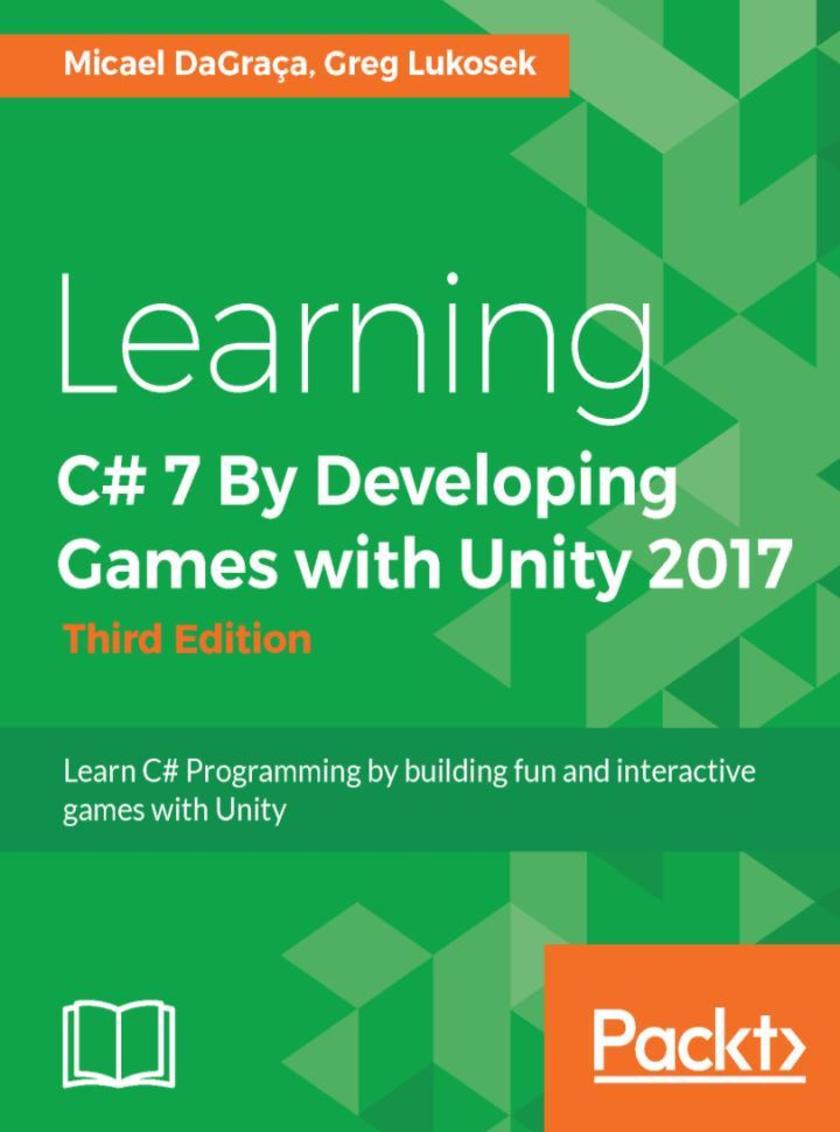
Learning C# 7 By Developing Games with Unity 2017 - Third Edition
¥90.46
Develop your first interactive 2D and 3D platformer game by learning the fundamentals of C# About This Book ? This is a step-by-step guide to learn the fundamentals of C# 7 *ing to develop GameObjects and master the basics of the new UI system in Unity ? Build and develop your 2D game right from scratch while implementing the principles of object-oriented programming and coding in C# 7 ? Get to grips with the fundamentals of optimizing your game using the latest features of Unity 2017 Who This Book Is For The book is targeted at beginner level Unity developers with no programming experience. If you are a Unity developer and you wish to learn how to write C# *s and code by creating games, then this book is for you. What You Will Learn ? Learn C# 7 using new features like tuples, variables, and non-nullable reference types while building games ? Understand the fundamentals of variables, methods, and code syntax in C# ? Use loops and collections efficiently in Unity to reduce the amount of code ? Develop a game using the object-oriented programming principles ? Implement simple enemy characters into the game to learn point to point movement and Tree behaviors ? Avoid performance mistakes by implementing different optimization techniques ? Export 3D models and 3D animations and import them inside a Unity project ? With your new knowledge of coding, you will be able to look at Unity's Scripting Reference code examples with confidence In Detail With the latest version of Unity 2017 released, are you interested in developing creative and interactive games while learning C# alongside? Then this is the book that you are looking for. Its all about offering you a fun introduction to the world of game programming with C#. You’ll start with the basics to get started with C# 7 and its latest features. Then you’ll see how to use C# 7 and its latest functional programming capabilities to create amazing games with Unity 2017. You’ll create your first C# * for Unity, add objects into it, and learn how to create game elements with them. Then you’ll work with the latest functional programming features of C# and how to leverage them for great game *ing. Throughout the book, you’ll learn to use the new Unity 2017 2D tool set and create an interactive 2D game with it. You will make enemies appear to challenge your player, and go through some optimization techniques to ensure great game performance. At the end, your 2D game will be transformed into 3D, and you’ll be able to skill up to become a pro C# programmer with Unity 2017! Style and approach The book takes a practical, step-by-step approach where you learn C# coding while developing fun and interactive games.

Practical GIS
¥90.46
Learn the basics of Geographic Information Systems by solving real-world problems with powerful open source tools About This Book ? This easy-to-follow guide allows you to manage and analyze geographic data with ease using open source tools ? Publish your geographical data online ? Learn the basics of geoinformatics in a practical way by solving problems Who This Book Is For The book is for IT professionals who have little or no knowledge of GIS. It’s also useful for those who are new to the GIS field who don’t want to spend a lot of money buying licenses of commercial tools and training. What You Will Learn ? Collect GIS data for your needs ? Store the data in a PostGIS database ? Exploit the data using the power of the GIS queries ? Analyze the data with basic and more advanced GIS tools ? Publish your data and share it with others ? Build a web map with your published data In Detail The most commonly used GIS tools automate tasks that were historically done manually—compiling new maps by overlaying one on top of the other or physically cutting maps into pieces representing specific study areas, changing their projection, and getting meaningful results from the various layers by applying mathematical functions and operations. This book is an easy-to-follow guide to use the most matured open source GIS tools for these tasks. We’ll start by setting up the environment for the tools we use in the book. Then you will learn how to work with QGIS in order to generate useful spatial data. You will get to know the basics of queries, data management, and geoprocessing. After that, you will start to practice your knowledge on real-world examples. We will solve various types of geospatial analyses with various methods. We will start with basic GIS problems by imitating the work of an enthusiastic real estate agent, and continue with more advanced, but typical tasks by solving a decision problem. Finally, you will find out how to publish your data (and results) on the web. We will publish our data with QGIS Server and GeoServer, and create a basic web map with the API of the lightweight Leaflet web mapping library. Style and approach The book guides you step by step through each of the core concepts of the GIS toolkit, building an overall picture of its capabilities. This guide approaches the topic systematically, allowing you to build upon what you learned in previous chapters. By the end of this book, you’ll have an understanding of the aspects of building a GIS system and will be able to take that knowledge with you to whatever project calls for it.
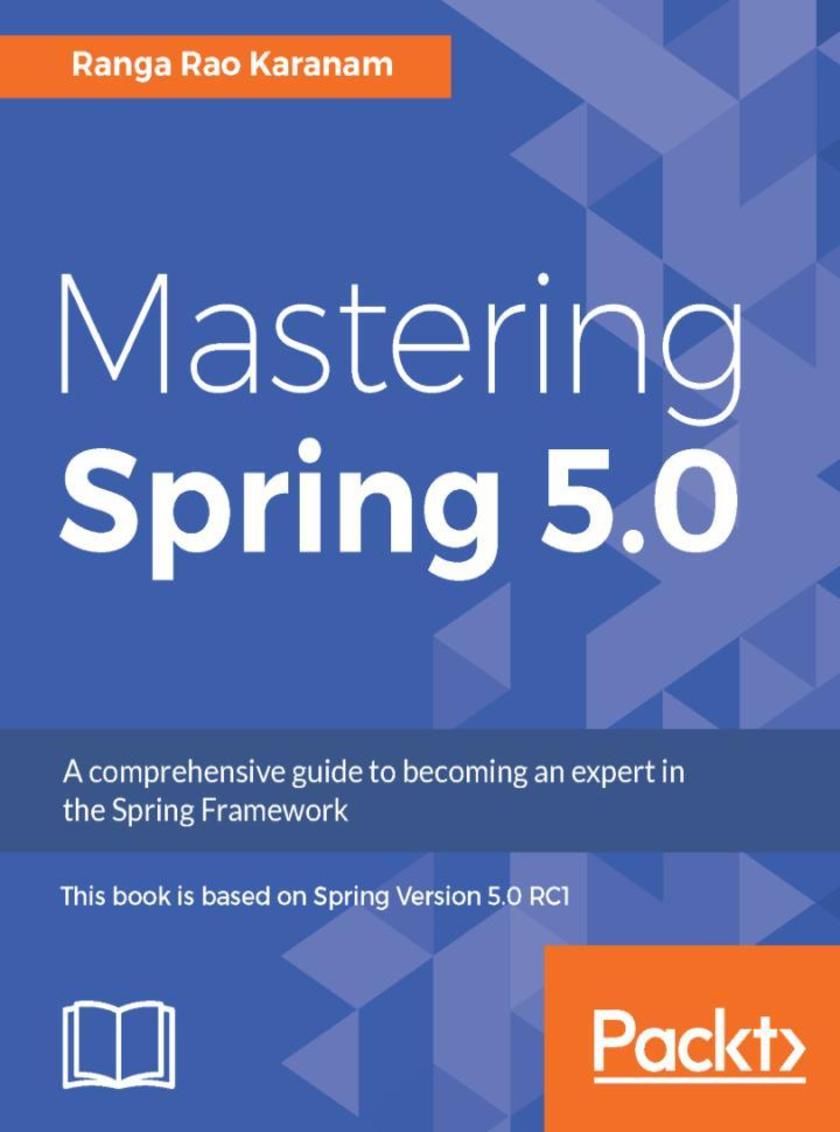
Mastering Spring 5.0
¥90.46
Develop cloud native applications with microservices using Spring Boot, Spring Cloud, and Spring Cloud Data Flow About This Book ? Explore the new features and components in Spring ? Evolve towards micro services and cloud native applications ? Gain powerful insights into advanced concepts of Spring and Spring Boot to develop applications more effectively ? Understand the basics of Kotlin and use it to develop a quick service with Spring Boot Who This Book Is For This book is for an experienced Java developer who knows the basics of Spring, and wants to learn how to use Spring Boot to build applications and deploy them to the cloud. What You Will Learn ? Explore the new features in Spring Framework 5.0 ? Build microservices with Spring Boot ? Get to know the advanced features of Spring Boot in order to effectively develop and monitor applications ? Use Spring Cloud to deploy and manage applications on the Cloud ? Understand Spring Data and Spring Cloud Data Flow ? Understand the basics of reactive programming ? Get to know the best practices when developing applications with the Spring Framework ? Create a new project using Kotlin and implement a couple of basic services with unit and integration testing In Detail Spring 5.0 is due to arrive with a myriad of new and exciting features that will change the way we’ve used the framework so far. This book will show you this evolution—from solving the problems of testable applications to building distributed applications on the cloud. The book begins with an insight into the new features in Spring 5.0 and shows you how to build an application using Spring MVC. You will realize how application architectures have evolved from monoliths to those built around microservices. You will then get a thorough understanding of how to build and extend microservices using Spring Boot. You will also understand how to build and deploy Cloud-Native microservices with Spring Cloud. The advanced features of Spring Boot will be illustrated through powerful examples. We will be introduced to a JVM language that’s quickly gaining popularity - Kotlin. Also, we will discuss how to set up a Kotlin project in Eclipse. By the end of the book, you will be equipped with the knowledge and best practices required to develop microservices with the Spring Framework. Style and Approach This book follows an end-to-end tutorial approach with lots of examples and sample applications, covering the major building blocks of the Spring framework.
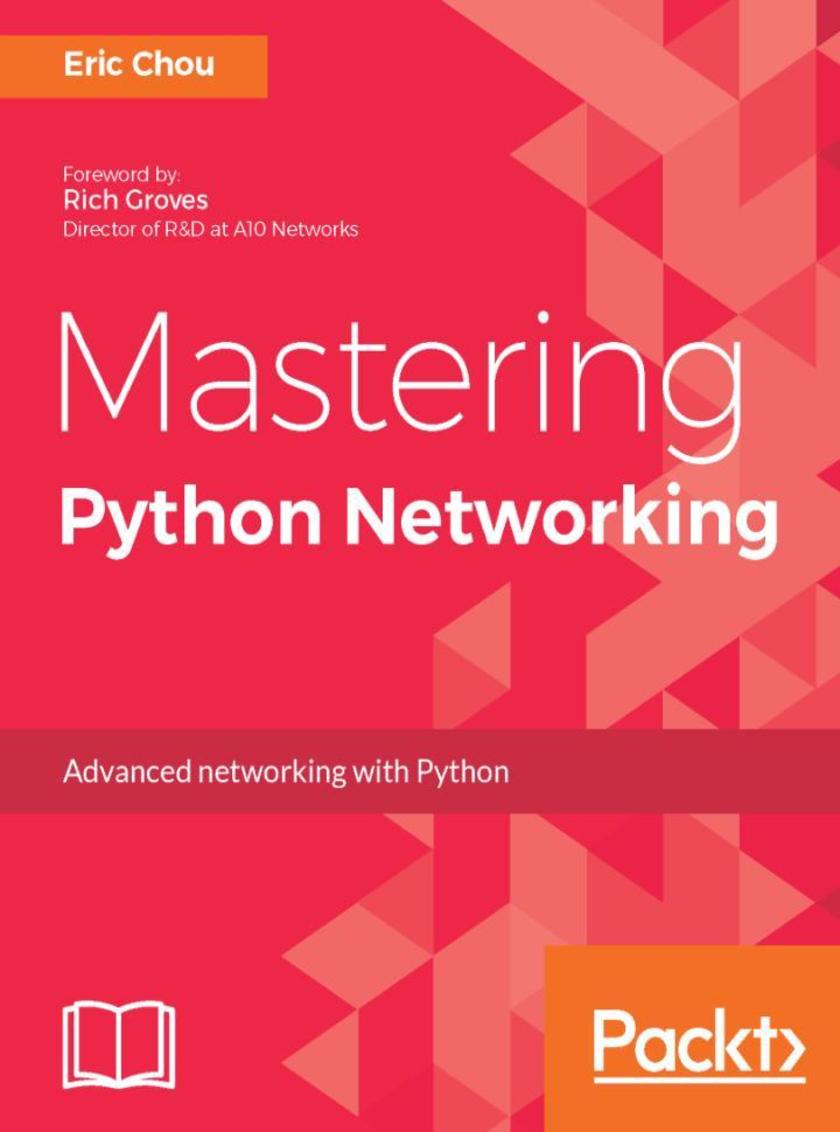
Mastering Python Networking
¥90.46
Become an expert in implementing advanced, network-related tasks with Python. About This Book ? Build the skills to perform all networking tasks using Python with ease ? Use Python for network device automation, DevOps, and software-defined networking ? Get practical guidance to networking with Python Who This Book Is For If you are a network engineer or a programmer who wants to use Python for networking, then this book is for you. A basic familiarity with networking-related concepts such as TCP/IP and a familiarity with Python programming will be useful. What You Will Learn ? Review all the fundamentals of Python and the TCP/IP suite ? Use Python to execute commands when the device does not support the API or programmatic interaction with the device ? Implement automation techniques by integrating Python with Cisco, Juniper, and Arista eAPI ? Integrate Ansible using Python to control Cisco, Juniper, and Arista networks ? Achieve network security with Python ? Build Flask-based web-service APIs with Python ? Construct a Python-based migration plan from a legacy to scalable SDN-based network. In Detail This book begins with a review of the TCP/ IP protocol suite and a refresher of the core elements of the Python language. Next, you will start using Python and supported libraries to automate network tasks from the current major network vendors. We will look at automating traditional network devices based on the command-line interface, as well as newer devices with API support, with hands-on labs. We will then learn the concepts and practical use cases of the Ansible framework in order to achieve your network goals. We will then move on to using Python for DevOps, starting with using open source tools to test, secure, and analyze your network. Then, we will focus on network monitoring and visualization. We will learn how to retrieve network information using a polling mechanism, ?ow-based monitoring, and visualizing the data programmatically. Next, we will learn how to use the Python framework to build your own customized network web services. In the last module, you will use Python for SDN, where you will use a Python-based controller with OpenFlow in a hands-on lab to learn its concepts and applications. We will compare and contrast OpenFlow, OpenStack, OpenDaylight, and NFV. Finally, you will use everything you’ve learned in the book to construct a migration plan to go from a legacy to a scalable SDN-based network. Style and approach An easy-to-follow guide packed with hands-on examples of using Python for network device automation, DevOps, and SDN.
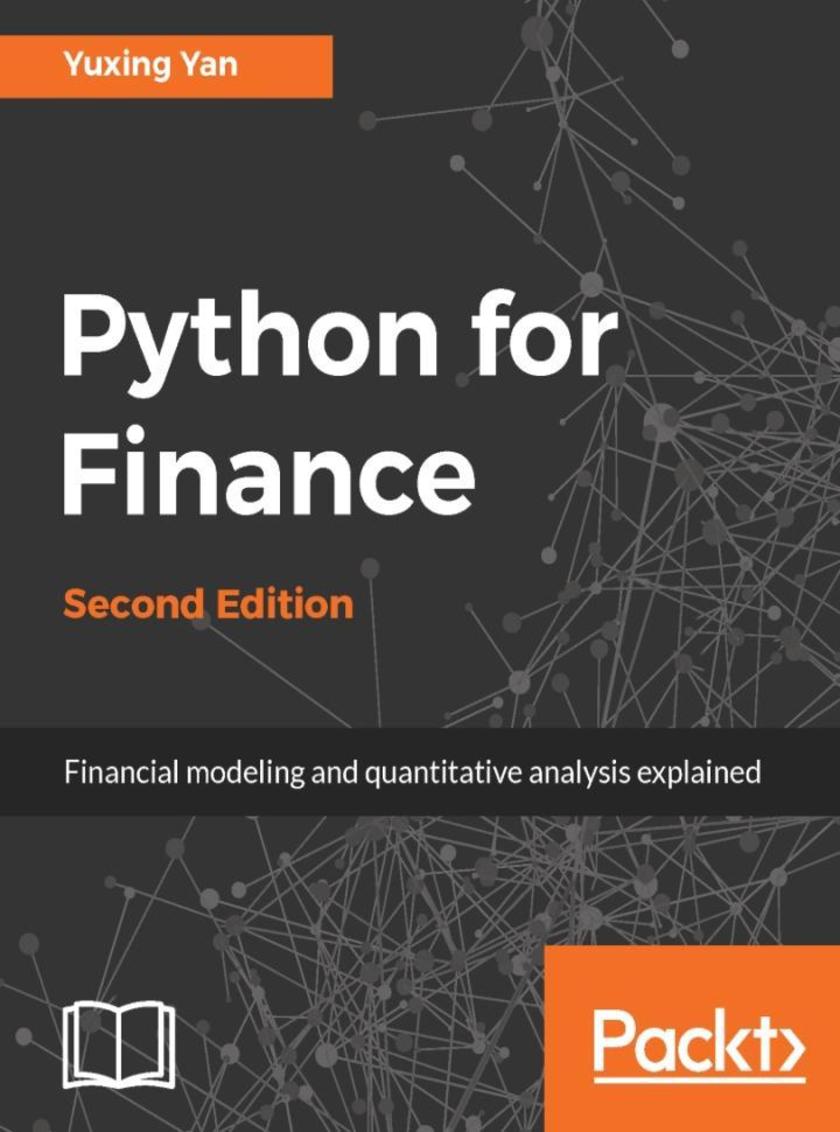
Python for Finance - Second Edition
¥90.46
Learn and implement various Quantitative Finance concepts using the popular Python libraries About This Book ? Understand the fundamentals of Python data structures and work with time-series data ? Implement key concepts in quantitative finance using popular Python libraries such as NumPy, SciPy, and matplotlib ? A step-by-step tutorial packed with many Python programs that will help you learn how to apply Python to finance Who This Book Is For This book assumes that the readers have some basic knowledge related to Python. However, he/she has no knowledge of quantitative finance. In addition, he/she has no knowledge about financial data. What You Will Learn ? Become acquainted with Python in the first two chapters ? Run CAPM, Fama-French 3-factor, and Fama-French-Carhart 4-factor models ? Learn how to price a call, put, and several exotic options ? Understand Monte Carlo simulation, how to write a Python program to replicate the Black-Scholes-Merton options model, and how to price a few exotic options ? Understand the concept of volatility and how to test the hypothesis that volatility changes over the years ? Understand the ARCH and GARCH processes and how to write related Python programs In Detail This book uses Python as its computational tool. Since Python is free, any school or organization can download and use it. This book is organized according to various finance subjects. In other words, the first edition focuses more on Python, while the second edition is truly trying to apply Python to finance. The book starts by explaining topics exclusively related to Python. Then we deal with critical parts of Python, explaining concepts such as time value of money stock and bond evaluations, capital asset pricing model, multi-factor models, time series analysis, portfolio theory, options and futures. This book will help us to learn or review the basics of quantitative finance and apply Python to solve various problems, such as estimating IBM’s market risk, running a Fama-French 3-factor, 5-factor, or Fama-French-Carhart 4 factor model, estimating the VaR of a 5-stock portfolio, estimating the optimal portfolio, and constructing the efficient frontier for a 20-stock portfolio with real-world stock, and with Monte Carlo Simulation. Later, we will also learn how to replicate the famous Black-Scholes-Merton option model and how to price exotic options such as the average price call option. Style and approach This book takes a step-by-step approach in explaining the libraries and modules in Python, and how they can be used to implement various aspects of quantitative finance. Each concept is explained in depth and supplemented with code examples for better understanding.
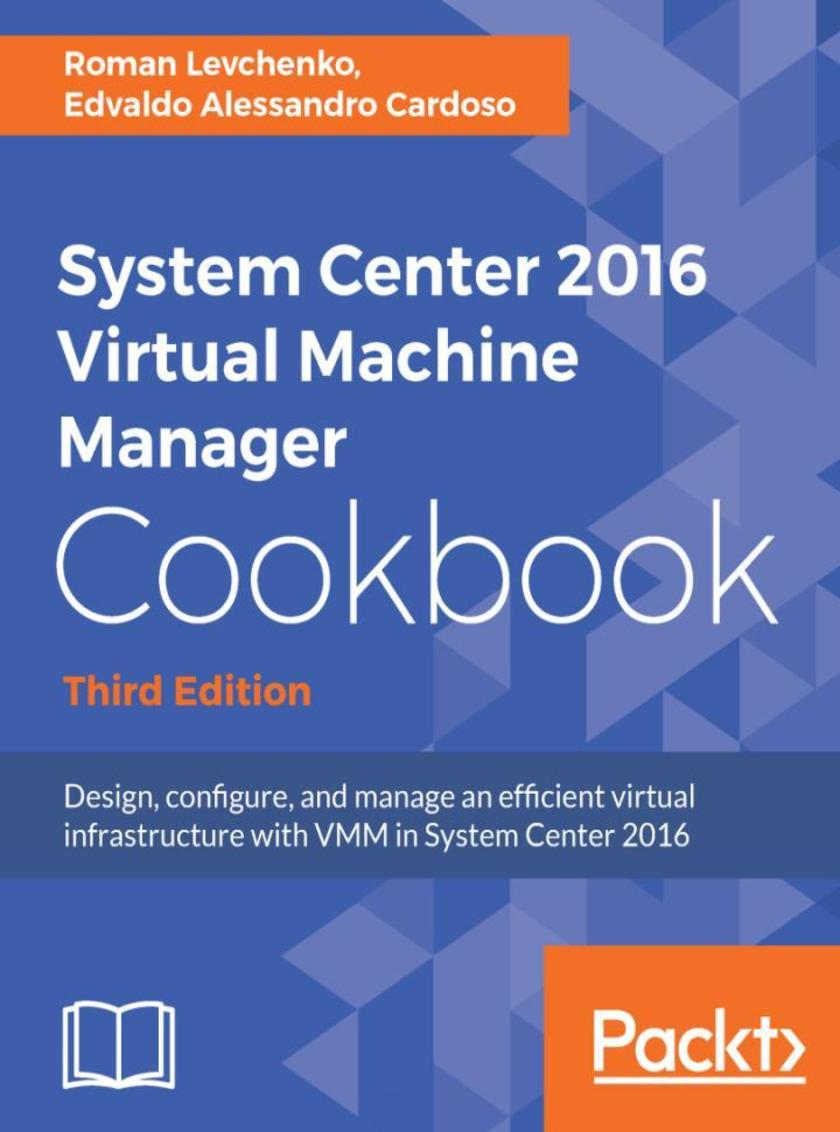
System Center 2016 Virtual Machine Manager Cookbook - Third Edition
¥90.46
Maximize your administration skills effectively and efficiently About This Book ? Implement cost-effective virtualization solutions for your organization with actionable recipes ? Explore the concepts of VMM with real-world use cases ? Use the latest features with VMM 2016 such as Cluster OS Rolling Upgrade, Guarded Fabric and Storage Spaces Direct Who This Book Is For If you are a solutions architect, technical consultant, administrator, or any other virtualization enthusiast who needs to use Microsoft System Center Virtual Machine Manager in a real-world environment, then this is the book for you. What You Will Learn ? Plan and design a VMM architecture for real-world deployment ? Configure fabric resources, including compute, networking, and storage ? Create and manage Storage Spaces Direct clusters in VMM ? Configure Guarded Fabric with Shielded VMs ? Create and deploy virtual machine templates and multi-tier services ? Manage Hyper-V and VMware environments from VMM ? Enhance monitoring and management capabilities ? Upgrade to VMM 2016 from previous versions In Detail Virtual Machine Manager (VMM) 2016 is part of the System Center suite to configure and manage datacenters and offers a unified management experience on-premises and Azure cloud. This book will be your best companion for day-to-day virtualization needs within your organization, as it takes you through a series of recipes to simplify and plan a highly scalable and available virtual infrastructure. You will learn the deployment tips, techniques, and solutions designed to show users how to improve VMM 2016 in a real-world scenario. The chapters are divided in a way that will allow you to implement the VMM 2016 and additional solutions required to effectively manage and monitor your fabrics and clouds. We will cover the most important new features in VMM 2016 across networking, storage, and compute, including brand new Guarded Fabric, Shielded VMs and Storage Spaces Direct. The recipes in the book provide step-by-step instructions giving you the simplest way to dive into VMM fabric concepts, private cloud, and integration with external solutions such as VMware, Operations Manager, and the Windows Azure Pack. By the end of this book, you will be armed with the knowledge you require to start designing and implementing virtual infrastructures in VMM 2016. Style and approach This book follows a recipe-based approach similar to our previous two successful editions, covering the practical application of the major features in VMM 2016.
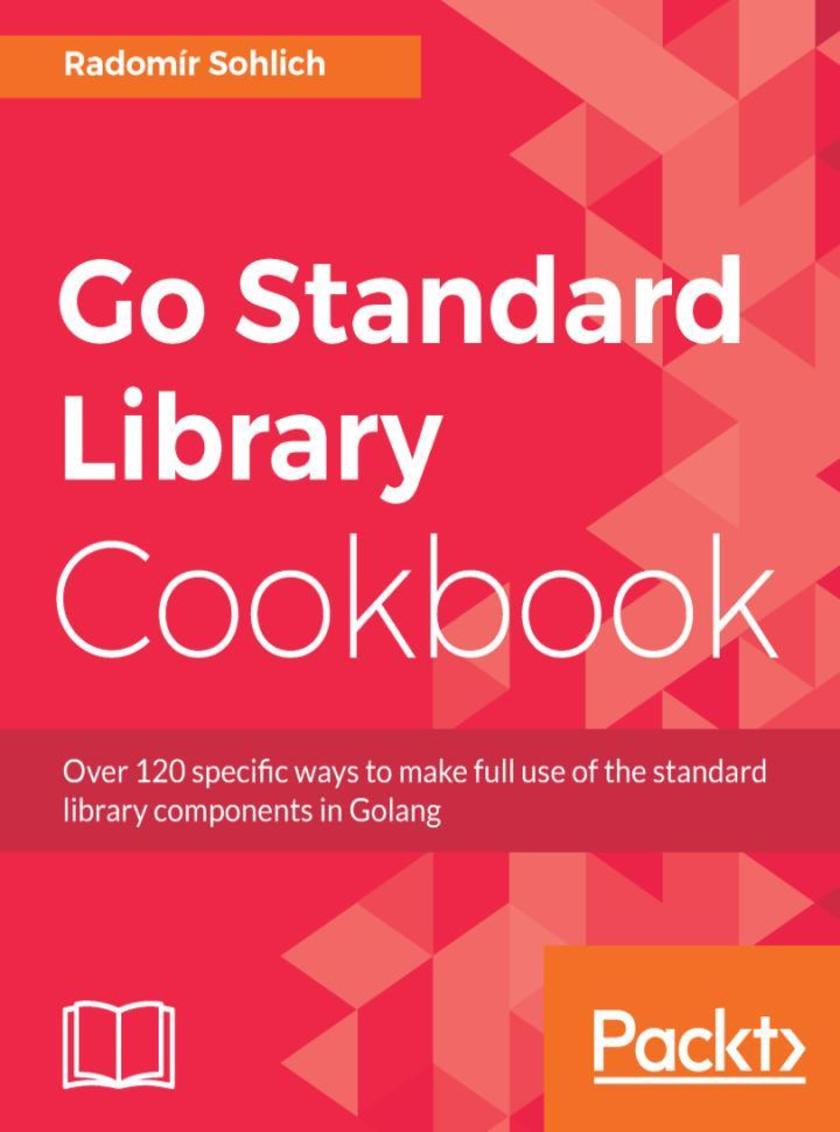
Go Standard Library Cookbook
¥90.46
Implement solutions by leveraging the power of the GO standard library and reducing dependency on external crates About This Book ? Develop high quality, fast and portable applications by leveraging the power of Go Standard Library. ? Practical recipes that will help you work with the standard library algorithms to boost your productivity as a Go developer. ? Compose your own algorithms without forfeiting the simplicity and elegance of the Standard Library. Who This Book Is For This book is for Go developers who would like to explore the power of Golang and learn how to use the Go standard library for various functionalities. The book assumes basic Go programming knowledge. What You Will Learn ? Access environmental variables ? Execute and work with child processes ? Manipulate strings by performing operations such as search, concatenate, and so on ? Parse and format the output of date/time information ? Operate on complex numbers and effective conversions between different number formats and bases ? Work with standard input and output ? Handle filesystem operations and file permissions ? Create TCP and HTTP servers, and access those servers with a client ? Utilize synchronization primitives ? Test your code In Detail Google's Golang will be the next talk of the town, with amazing features and a powerful library. This book will gear you up for using golang by taking you through recipes that will teach you how to leverage the standard library to implement a particular solution. This will enable Go developers to take advantage of using a rock-solid standard library instead of third-party frameworks. The book begins by exploring the functionalities available for interaction between the environment and the operating system. We will explore common string operations, date/time manipulations, and numerical problems. We'll then move on to working with the database, accessing the filesystem, and performing I/O operations. From a networking perspective, we will touch on client and server-side solutions. The basics of concurrency are also covered, before we wrap up with a few tips and tricks. By the end of the book, you will have a good overview of the features of the Golang standard library and what you can achieve with them. Ultimately, you will be proficient in implementing solutions with powerful standard libraries. Style and approach Solution based approach showcasing the power of Go standard library for easy practical implementations.

ASP.NET Core MVC 2.0 Cookbook
¥90.46
Learn to implement ASP.NET Core features to build effective software that can be scaled and maintained easily About This Book ? Practical solutions to recurring issues in the web development world ? Recipes on the latest features of ASP.Net Core 2.0 ? Coverage of Bootstrap, Angular, and JavaScript lets you supercharge your frontend Who This Book Is For This book is written for the ASP.NET developer who wants to deliver professional-standard software, quickly and efficiently. It's filled with hands-on recipes, practical advice, and guidance to help developers with every aspect of the ASP.NET development cycle. Whether you've just started out or are a seasoned pro, the Asp.Net Core 2.0 Cookbook is written for you. What You Will Learn ? Build ASP.Net Core 2.0 applications using HTTP services with WebApi ? Learn to unit-test, load test, and perform test applications using client-side and server-side frameworks ? Debug, monitor and troubleshoot ASP.Net Core 2.0 applications using popular tools ? Reuse components with NuGet and create modular components with middleware ? Create applications using client-side technologies such as HTML5, JavaScript, jQuery, and Angular ? Build responsive and dynamic UIs for your MVC apps using Bootstrap ? Leverage tools like Karma, Jasmine, QUnit, xUnit, Selenium, Microsoft Fakes, and Visual Studio 2017 Enterprise In Detail The ASP.NET Core 2.0 Framework has been designed to meet all the needs of today’s web developers. It provides better control, support for test-driven development, and cleaner code. Moreover, it’s lightweight and allows you to run apps on Windows, OSX and Linux, making it the most popular web framework with modern day developers. This book takes a unique approach to web development, using real-world examples to guide you through problems with ASP.NET Core 2.0 web applications. It covers Visual Studio 2017- and ASP.NET Core 2.0-specifc changes and provides general MVC development recipes. It explores setting up .NET Core, Visual Studio 2017, Node.js modules, and NuGet. Next, it shows you how to work with Inversion of Control data pattern and caching. We explore everyday ASP.NET Core MVC 2.0 patterns and go beyond it into troubleshooting. Finally, we lead you through migrating, hosting, and deploying your code. By the end of the book, you’ll not only have explored every aspect of ASP.NET Core MVC 2.0, you’ll also have a reference you can keep coming back to whenever you need to get the job done. Style and approach Asp.Net Core 2.0 has been redesigned to meet the needs of today's web developers. Open-source, cross-platform, and fully integrated with the most powerful front-end frameworks, it still has all the benefits of ease and speed of development that have made it one of the most popular web frameworks in production today. Asp.Net Core 2.0 Development Cookbook takes a unique approach to web development. Based around the tasks that you will be using every day when making websites, it will guide you through all the common problems you'll face when developing web applications.
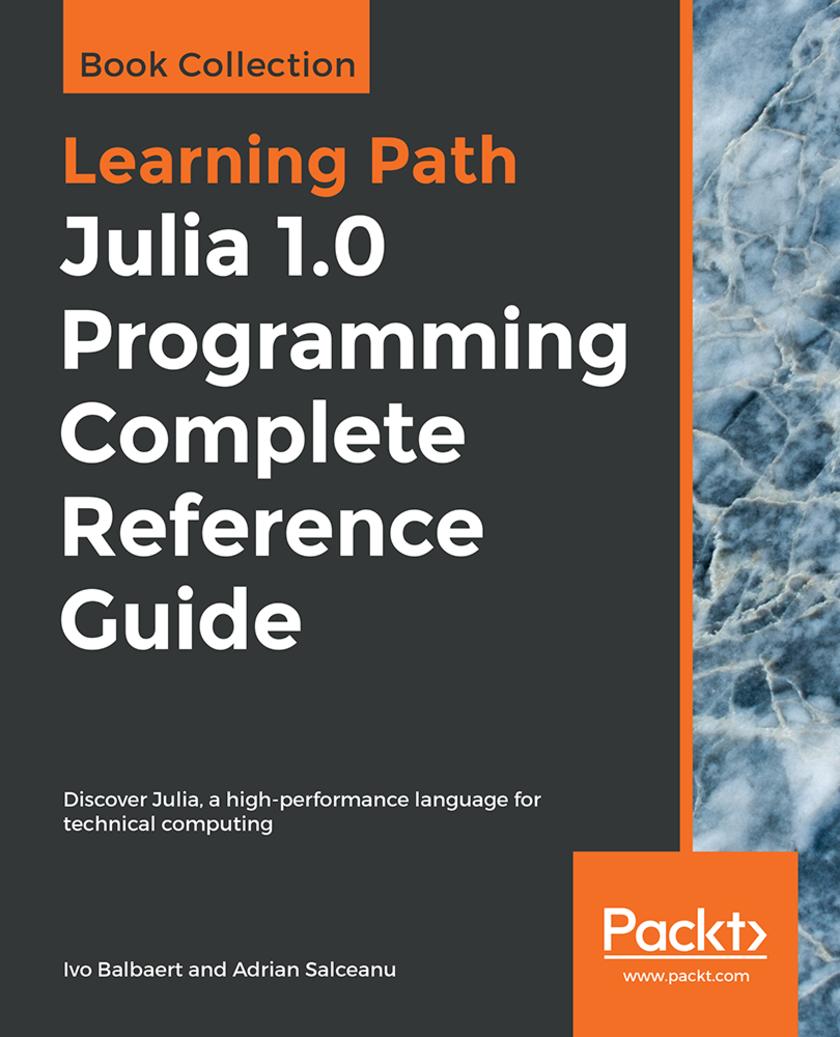
Julia 1.0 Programming Complete Reference Guide
¥88.28
Learn dynamic programming with Julia to build apps for data analysis, visualization, machine learning, and the web Key Features * Leverage Julia's high speed and efficiency to build fast, efficient applications * Perform supervised and unsupervised machine learning and time series analysis * Tackle problems concurrently and in a distributed environment Book Description Julia offers the high productivity and ease of use of Python and R with the lightning-fast speed of C++. There’s never been a better time to learn this language, thanks to its large-scale adoption across a wide range of domains, including fintech, biotech and artificial intelligence (AI). You will begin by learning how to set up a running Julia platform, before exploring its various built-in types. This Learning Path walks you through two important collection types: arrays and matrices. You’ll be taken through how type conversions and promotions work, and in further chapters you'll study how Julia interacts with operating systems and other languages. You’ll also learn about the use of macros, what makes Julia suitable for numerical and scientific computing, and how to run external programs. Once you have grasped the basics, this Learning Path goes on to how to analyze the Iris dataset using DataFrames. While building a web scraper and a web app, you’ll explore the use of functions, methods, and multiple dispatches. In the final chapters, you'll delve into machine learning, where you'll build a book recommender system. By the end of this Learning Path, you’ll be well versed with Julia and have the skills you need to leverage its high speed and efficiency for your applications. This Learning Path includes content from the following Packt products: * Julia 1.0 Programming - Second Edition by Ivo Balbaert * Julia Programming Projects by Adrian Salceanu What you will learn * Create your own types to extend the built-in type system * Visualize your data in Julia with plotting packages * Explore the use of built-in macros for testing and debugging * Integrate Julia with other languages such as C, Python, and MATLAB * Analyze and manipulate datasets using Julia and DataFrames * Develop and run a web app using Julia and the HTTP package * Build a recommendation system using supervised machine learning Who this book is for If you are a statistician or data scientist who wants a quick course in the Julia programming language while building big data applications, this Learning Path is for you. Basic knowledge of mathematics and programming is a must.
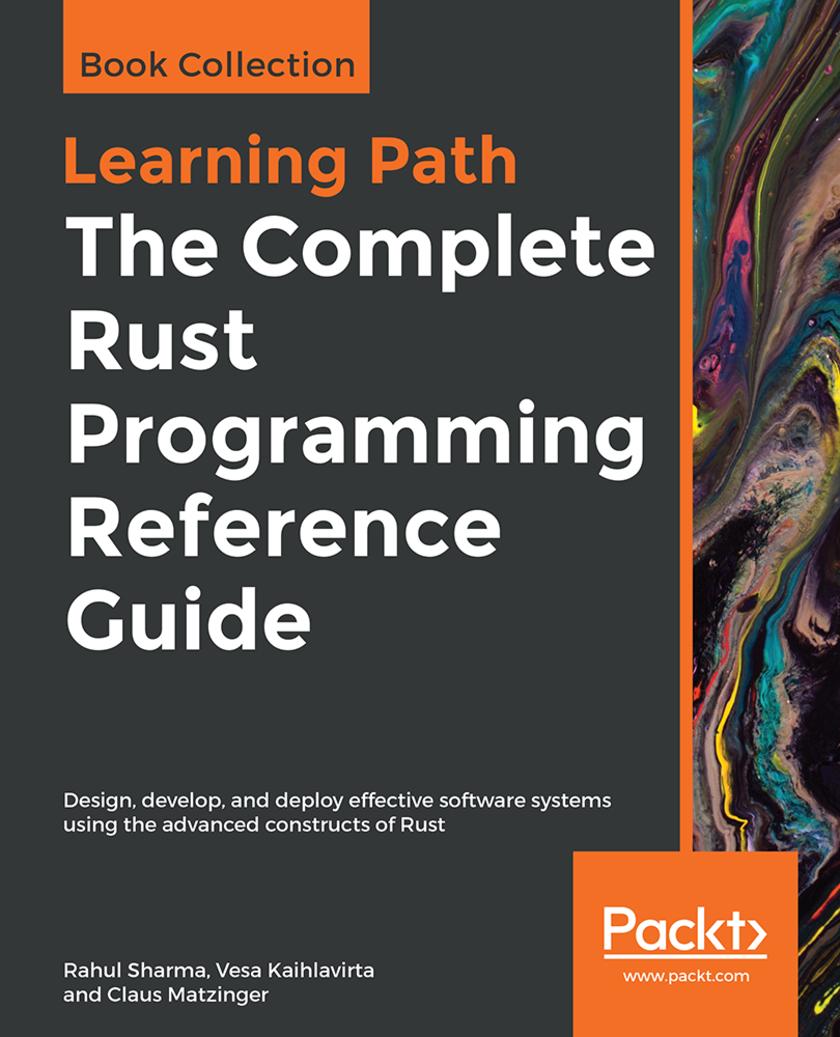
The Complete Rust Programming Reference Guide
¥88.28
Design and implement professional-level programs by leveraging modern data structures and algorithms in Rust Key Features * Improve your productivity by writing more simple and easy code in Rust * Discover the functional and reactive implementations of traditional data structures * Delve into new domains of Rust, including WebAssembly, networking, and command-line tools Book Description Rust is a powerful language with a rare combination of safety, speed, and zero-cost abstractions. This Learning Path is filled with clear and simple explanations of its features along with real-world examples, demonstrating how you can build robust, scalable, and reliable programs. You’ll get started with an introduction to Rust data structures, algorithms, and essential language constructs. Next, you will understand how to store data using linked lists, arrays, stacks, and queues. You’ll also learn to implement sorting and searching algorithms, such as Brute Force algorithms, Greedy algorithms, Dynamic Programming, and Backtracking. As you progress, you’ll pick up on using Rust for systems programming, network programming, and the web. You’ll then move on to discover a variety of techniques, right from writing memory-safe code, to building idiomatic Rust libraries, and even advanced macros. By the end of this Learning Path, you’ll be able to implement Rust for enterprise projects, writing better tests and documentation, designing for performance, and creating idiomatic Rust code. This Learning Path includes content from the following Packt products: * Mastering Rust - Second Edition by Rahul Sharma and Vesa Kaihlavirta * Hands-On Data Structures and Algorithms with Rust by Claus Matzinger What you will learn * Design and implement complex data structures in Rust * Create and use well-tested and reusable components with Rust * Understand the basics of multithreaded programming and advanced algorithm design * Explore application profiling based on benchmarking and testing * Study and apply best practices and strategies in error handling * Create efficient web applications with the Actix-web framework * Use Diesel for type-safe database interactions in your web application Who this book is for If you are already familiar with an imperative language and now want to progress from being a beginner to an intermediate-level Rust programmer, this Learning Path is for you. Developers who are already familiar with Rust and want to delve deeper into the essential data structures and algorithms in Rust will also find this Learning Path useful.

Improving your Penetration Testing Skills
¥88.28
Evade antiviruses and bypass firewalls with the most widely used penetration testing frameworks Key Features * Gain insights into the latest antivirus evasion techniques * Set up a complete pentesting environment using Metasploit and virtual machines * Discover a variety of tools and techniques that can be used with Kali Linux Book Description Penetration testing or ethical hacking is a legal and foolproof way to identify vulnerabilities in your system. With thorough penetration testing, you can secure your system against the majority of threats. This Learning Path starts with an in-depth explanation of what hacking and penetration testing is. You’ll gain a deep understanding of classical SQL and command injection flaws, and discover ways to exploit these flaws to secure your system. You'll also learn how to create and customize payloads to evade antivirus software and bypass an organization's defenses. Whether it’s exploiting server vulnerabilities and attacking client systems, or compromising mobile phones and installing backdoors, this Learning Path will guide you through all this and more to improve your defense against online attacks. By the end of this Learning Path, you'll have the knowledge and skills you need to invade a system and identify all its vulnerabilities. This Learning Path includes content from the following Packt products: * Web Penetration Testing with Kali Linux - Third Edition by Juned Ahmed Ansari and Gilberto Najera-Gutierrez * Metasploit Penetration Testing Cookbook - Third Edition by Abhinav Singh , Monika Agarwal, et al What you will learn * Build and analyze Metasploit modules in Ruby * Integrate Metasploit with other penetration testing tools * Use server-side attacks to detect vulnerabilities in web servers and their applications * Explore automated attacks such as fuzzing web applications * Identify the difference between hacking a web application and network hacking * Deploy Metasploit with the Penetration Testing Execution Standard (PTES) * Use MSFvenom to generate payloads and backdoor files, and create shellcode Who this book is for This Learning Path is designed for security professionals, web programmers, and pentesters who want to learn vulnerability exploitation and make the most of the Metasploit framework. Some understanding of penetration testing and Metasploit is required, but basic system administration skills and the ability to read code are a must.
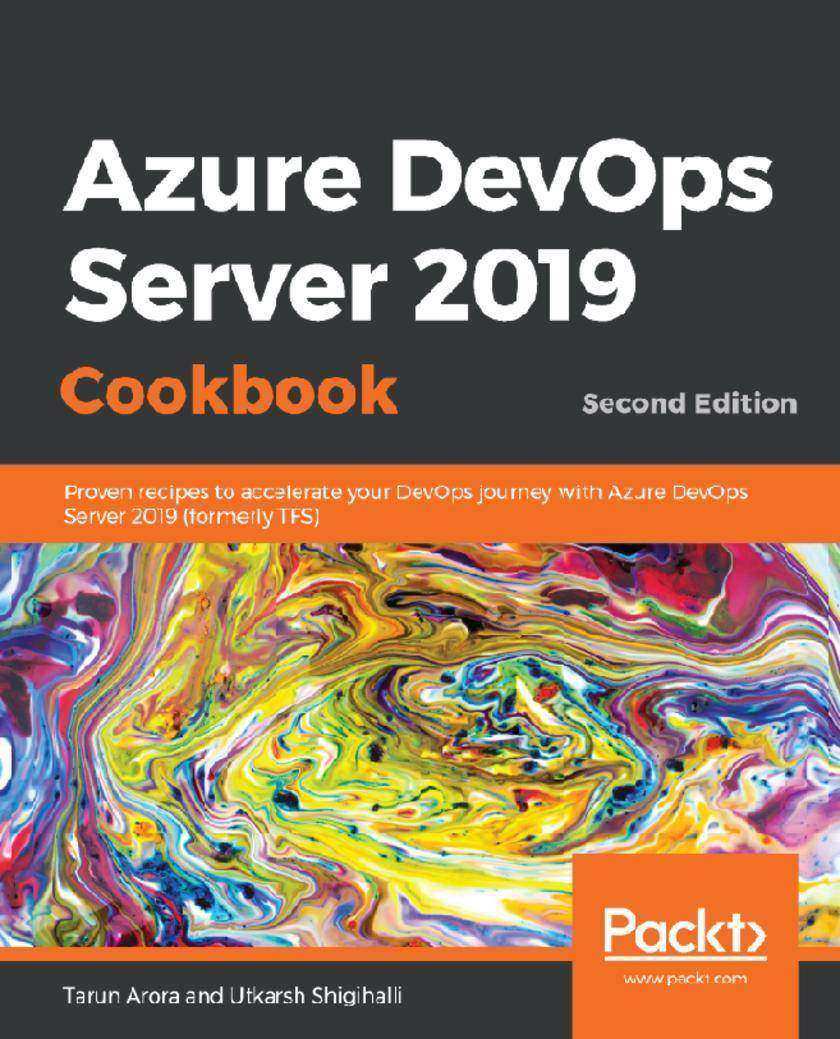
Azure DevOps Server 2019 Cookbook
¥88.28
Over 70 recipes to effectively apply DevOps best practices and implement Agile, Git, CI-CD & Test automation using Azure DevOps Server (TFS) 2019 Key Features * Learn improving code quality using pull requests, branch policies, githooks and git branching design * Accelerate the deployment of high quality software by automating build and releases using CI-CD Pipelines. * Learn tried and tested techniques to automate database deployments, App Service & Function Deployments in Azure. Book Description Azure DevOps Server, previously known as Team Foundation Server (TFS), is a comprehensive on-premise DevOps toolset with a rich ecosystem of open source plugins. This book is your one stop guide to learn how to effectively use all of these Azure DevOps services to go from zero to DevOps. You will start by building high-quality scalable software targeting .NET, .NET core or Node.js applications. You will learn techniques that will help you to set up end-to-end traceability of your code changes from design through to release. Whether you are deploying software on-premise or in the cloud in App Service, Functions, or Azure VMs, this book will help you learn release management techniques to reduce release failures. Next, you will be able to secure application configuration by using Azure KeyVault. You will also learn how to create and release extensions to the Azure DevOps marketplace and reach million developer ecosystem for feedback. The working extension samples will allow you to iterate changes in your extensions easily and release updates to the marketplace quickly. By the end of this book, techniques provided in the book will help you break down the invisible silos between your software development teams. This will transform you from being a good software development team to an elite modern cross functional software development team. What you will learn * Set up a team project for an Agile delivery team, importing requirements from Excel * Plan,track, and monitor progress using self updating boards, Sprint and Kanban boards * Unlock the features of Git by using branch policies, Git pull requests, forks, and Git hooks * Build and release .NET core, SQL and Node.js applications using Azure Pipeline * Automate testing by integrating Microsoft and open source testing frameworks * Extend Azure DevOps Server to a million developer ecosystem Who this book is for This book is for anyone looking to succeed with DevOps. The techniques in this book apply to all roles of the software development lifecycle including developers, testers, architects, configuration analysts, site reliability engineers and release managers. If you are a new user you’ll learn how to get started; if you are an experienced user you’ll learn how to launch your project into a modern and mature DevOps enabled software development team.

Programming Microsoft Dynamics 365 Business Central
¥88.28
Explore the fundamentals of Dynamics 365 Business Central and the Visual Studio Code development environment with the help of useful examples and case studies Key Features * Tailor your applications to best suit the needs of your business * Explore the latest features of Business Central with examples curated by industry experts * Integrate Business Central features in your applications with this comprehensive guide Book Description Microsoft Dynamics 365 Business Central is a full ERP business solution suite with a robust set of development tools to support customization and enhancement. These tools can be used to tailor Business Central's in-built applications to support complete management functions for finance, supply chain, manufacturing, and operations. Using a case study approach, this book will introduce you to Dynamics 365 Business Central and Visual Studio Code development tools to help you become a productive Business Central developer. You'll also learn how to evaluate a product's development capabilities and manage Business Central-based development and implementation. You'll explore application structure, the construction of and uses for each object type, and how it all fits together to build apps that meet special business requirements. By the end of this book, you'll understand how to design and develop high-quality software using the Visual Studio Code development environment, the AL language paired with the improved editor, patterns, and features. What you will learn * Programming using the AL language in the Visual Studio Code development environment * Explore functional design and development using AL * How to build interactive pages and learn how to extract data for users * How to use best practices to design and develop modifications for new functionality integrated with the standard Business Central software * Become familiar with deploying the broad range of components available in a Business Central system * Create robust, viable systems to address specific business requirements Who this book is for If you want to learn about Dynamics 365 Business Central's powerful and extensive built-in development capabilities, this is the book for you. ERP consultants and managers of Business Central development will also find this book helpful. Although you aren't expected to have worked with Dynamics Business Central, basic understanding of programming and familiarity with business application software will help you understand the concepts covered in this book.
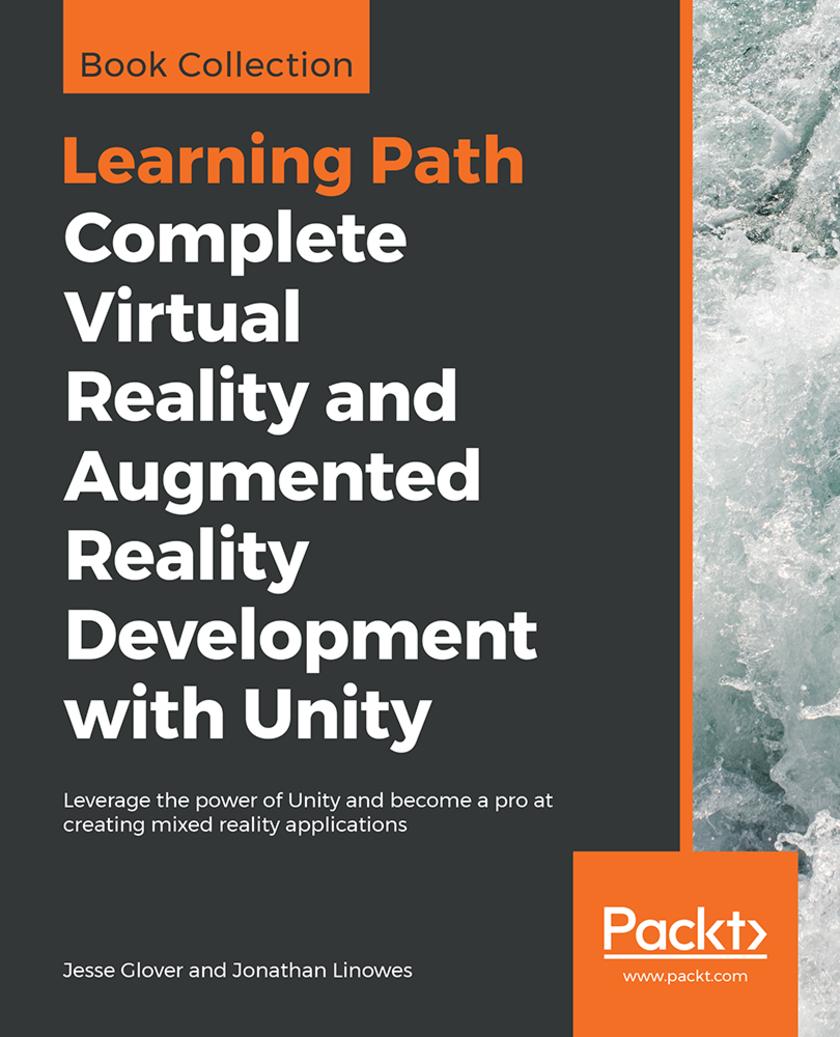
Complete Virtual Reality and Augmented Reality Development with Unity
¥88.28
Get close and comfortable with Unity and build applications that run on HoloLens, Daydream, and Oculus Rift Key Features * Build fun augmented reality applications using ARKit, ARCore, and Vuforia * Explore virtual reality by developing more than 10 engaging projects * Learn how to integrate AR and VR concepts together in a single application Book Description Unity is the leading platform to develop mixed reality experiences because it provides a great pipeline for working with 3D assets. Using a practical and project-based approach, this Learning Path educates you about the specifics of AR and VR development using Unity 2018 and Unity 3D. You’ll learn to integrate, animate, and overlay 3D objects on your camera feed, before moving on to implement sensor-based AR applications. You’ll explore various concepts by creating an AR application using Vuforia for both macOS and Windows for Android and iOS devices. Next, you’ll learn how to develop VR applications that can be experienced with devices, such as Oculus and Vive. You’ll also explore various tools for VR development: gaze-based versus hand controller input, world space UI canvases, locomotion and teleportation, timeline animation, and multiplayer networking. You’ll learn the Unity 3D game engine via the interactive Unity Editor and C# programming. By the end of this Learning Path, you’ll be fully equipped to develop rich, interactive mixed reality experiences using Unity. This Learning Path includes content from the following Packt products: * Unity Virtual Reality Projects - Second Edition by Jonathan Linowes * Unity 2018 Augmented Reality Projects by Jesse Glover What you will learn * Create 3D scenes to learn about world space and scale * Move around your scenes using locomotion and teleportation * Create filters or overlays that work with facial recognition software * Interact with virtual objects using eye gaze, hand controllers, and user input events * Design and build a VR storytelling animation with a soundtrack and timelines * Create social VR experiences with Unity networking Who this book is for If you are a game developer familiar with 3D computer graphics and interested in building your own AR and VR games or applications, then this Learning Path is for you. Any prior experience in Unity and C# will be an advantage. In all, this course teaches you the tools and techniques to develop engaging mixed reality applications.
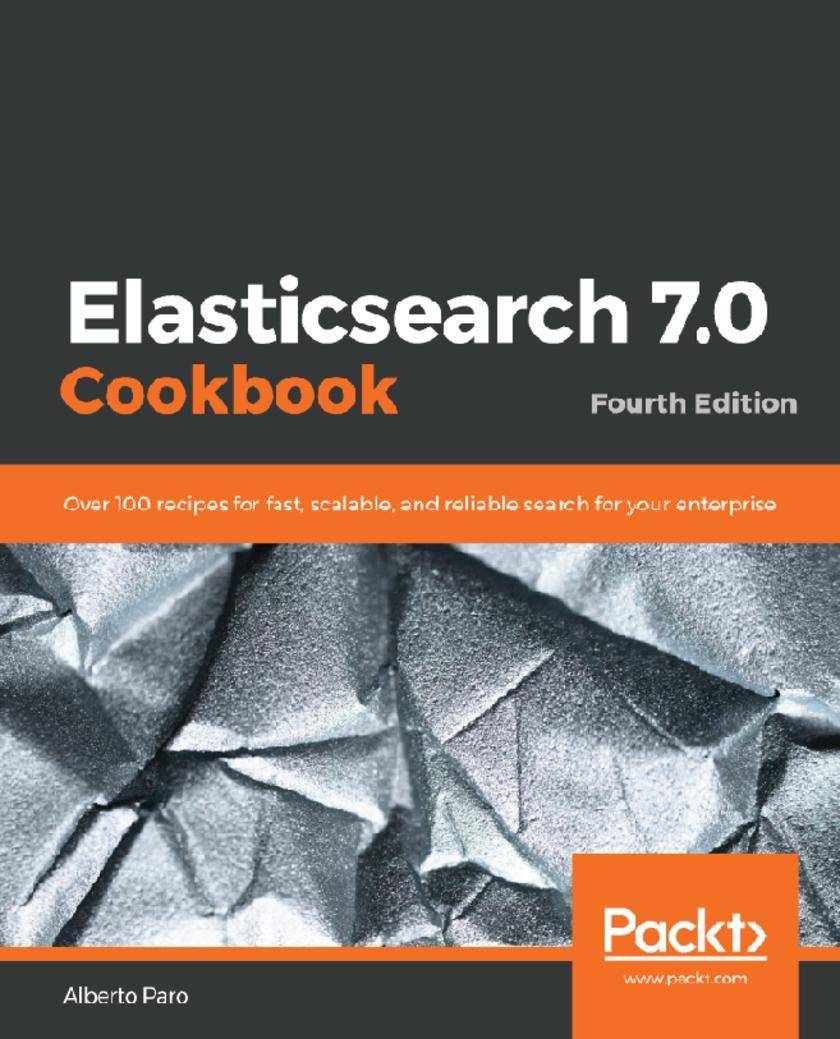
Elasticsearch 7.0 Cookbook
¥88.28
Search, analyze, and manage data effectively with Elasticsearch 7 Key Features * Extend Elasticsearch functionalities and learn how to deploy on Elastic Cloud * Deploy and manage simple Elasticsearch nodes as well as complex cluster topologies * Explore the capabilities of Elasticsearch 7 with easy-to-follow recipes Book Description Elasticsearch is a Lucene-based distributed search server that allows users to index and search unstructured content with petabytes of data. With this book, you'll be guided through comprehensive recipes on what's new in Elasticsearch 7, and see how to create and run complex queries and analytics. Packed with recipes on performing index mapping, aggregation, and scripting using Elasticsearch, this fourth edition of Elasticsearch Cookbook will get you acquainted with numerous solutions and quick techniques for performing both every day and uncommon tasks such as deploying Elasticsearch nodes, integrating other tools to Elasticsearch, and creating different visualizations. You will install Kibana to monitor a cluster and also extend it using a variety of plugins. Finally, you will integrate your Java, Scala, Python, and big data applications such as Apache Spark and Pig with Elasticsearch, and create efficient data applications powered by enhanced functionalities and custom plugins. By the end of this book, you will have gained in-depth knowledge of implementing Elasticsearch architecture, and you'll be able to manage, search, and store data efficiently and effectively using Elasticsearch. What you will learn * Create an efficient architecture with Elasticsearch * Optimize search results by executing analytics aggregations * Build complex queries by managing indices and documents * Monitor the performance of your cluster and nodes * Design advanced mapping to take full control of index steps * Integrate Elasticsearch in Java, Scala, Python, and big data applications * Install Kibana to monitor clusters and extend it for plugins Who this book is for If you’re a software engineer, big data infrastructure engineer, or Elasticsearch developer, you'll find this book useful. This Elasticsearch book will also help data professionals working in the e-commerce and FMCG industry who use Elastic for metrics evaluation and search analytics to get deeper insights for better business decisions. Prior experience with Elasticsearch will help you get the most out of this book.
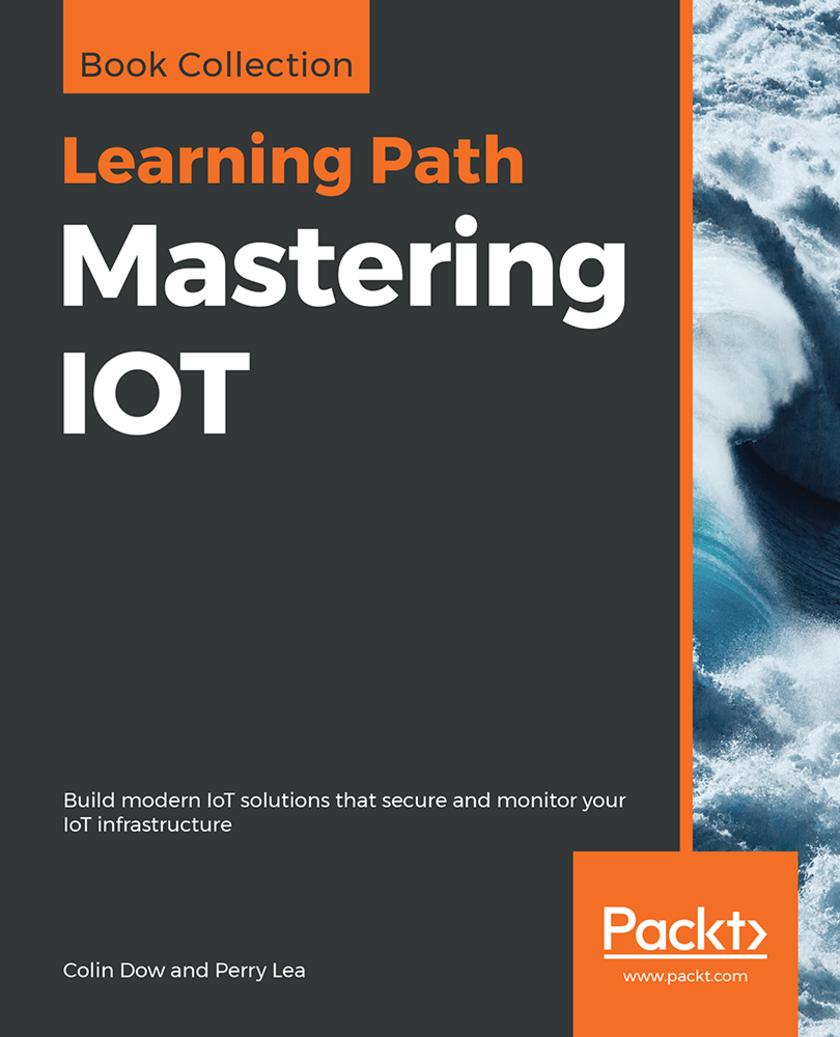
Mastering IOT
¥88.28
Leverage the full potential of IoT with the combination of Raspberry Pi 3 and Python and architect a complete IoT system that is the best fit for your organization Key Features * Build complex Python-based applications with IoT * Explore different concepts, technologies, and tradeoffs in the IoT architectural stack * Delve deep into each element of the IoT design—from sensors to the cloud Book Description The Internet of Things (IoT) is the fastest growing technology market. Industries are embracing IoT technologies to improve operational expenses, product life, and people's well-being. We’ll begin our journey with an introduction to Raspberry Pi and quickly jump right into Python programming. We’ll learn all concepts through multiple projects, and then reinforce our learnings by creating an IoT robot car. We’ll examine modern sensor systems and focus on what their power and functionality can bring to our system. We’ll also gain insight into cloud and fog architectures, including the OpenFog standards. The Learning Path will conclude by discussing three forms of prevalent attacks and ways to improve the security of our IoT infrastructure. By the end of this Learning Path, we will have traversed the entire spectrum of technologies needed to build a successful IoT system, and will have the confidence to build, secure, and monitor our IoT infrastructure. This Learning Path includes content from the following Packt products: * Internet of Things Programming Projects by Colin Dow * Internet of Things for Architects by Perry Lea What you will learn * Build a home security dashboard using an infrared motion detector * Receive data and display it with an actuator connected to the Raspberry Pi * Build an IoT robot car that is controlled via the Internet * Use IP-based communication to easily and quickly scale your system * Explore cloud protocols, such as Message Queue Telemetry Transport (MQTT) and CoAP * Secure communication with encryption forms, such as symmetric key Who this book is for This Learning Path is designed for developers, architects, and system designers who are interested in building exciting projects with Python by understanding the IoT ecosphere, various technologies, and tradeoffs. Technologists and technology managers who want to develop a broad view of IoT architecture, will also find this Learning Path useful. Prior programming knowledge of Python is a must.
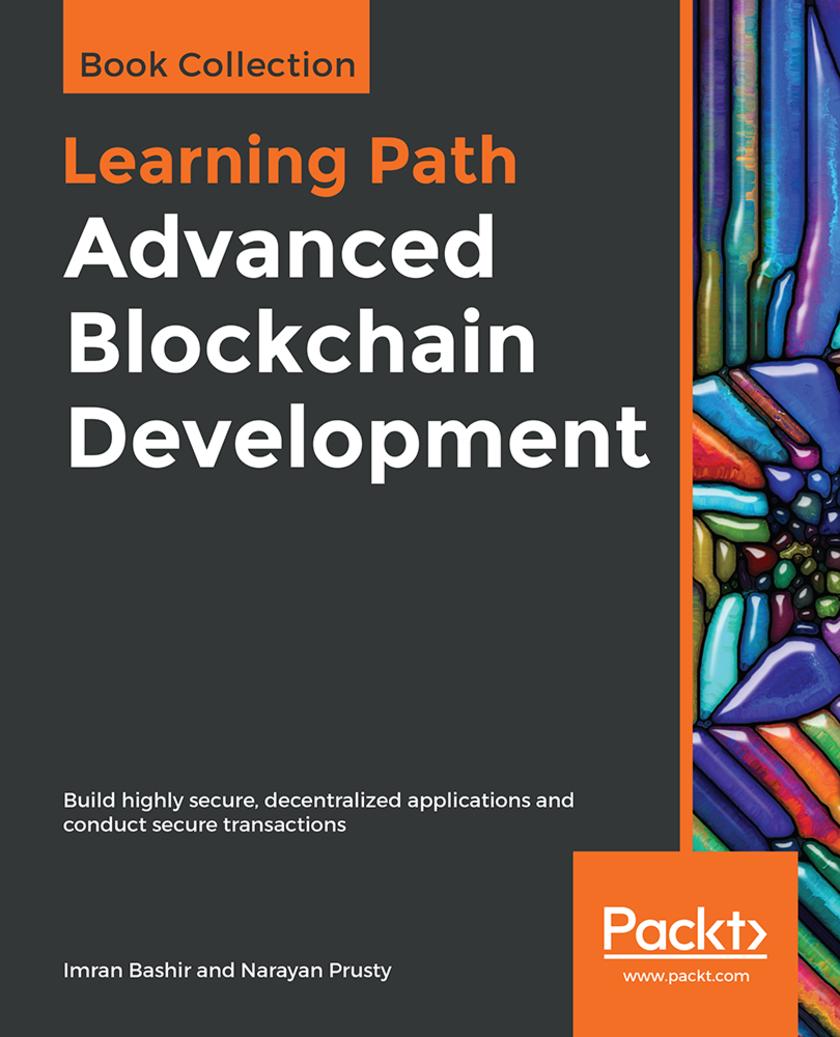
Advanced Blockchain Development
¥88.28
Explore distributed ledger technology, decentralization, and smart contracts and develop real-time decentralized applications with Ethereum and Solidity Key Features * Get to grips with the underlying technical principles and implementations of blockchain * Build powerful applications using Ethereum to secure transactions and create smart contracts * Gain advanced insights into cryptography and cryptocurrencies Book Description Blockchain technology is a distributed ledger with applications in industries such as finance, government, and media. This Learning Path is your guide to building blockchain networks using Ethereum, JavaScript, and Solidity. You will get started by understanding the technical foundations of blockchain technology, including distributed systems, cryptography and how this digital ledger keeps data secure. Further into the chapters, you’ll gain insights into developing applications using Ethereum and Hyperledger. As you build on your knowledge of Ether security, mining , smart contracts, and Solidity, you’ll learn how to create robust and secure applications that run exactly as programmed without being affected by fraud, censorship, or third-party interference. Toward the concluding chapters, you’ll explore how blockchain solutions can be implemented in applications such as IoT apps, in addition to its use in currencies. The Learning Path will also highlight how you can increase blockchain scalability and even discusses the future scope of this fascinating and powerful technology. By the end of this Learning Path, you'll be equipped with the skills you need to tackle pain points encountered in the blockchain life cycle and confidently design and deploy decentralized applications. This Learning Path includes content from the following Packt products: * Mastering Blockchain - Second Edition by Imran Bashir * Building Blockchain Projects by Narayan Prusty What you will learn * Understand why decentralized applications are important * Discover the mechanisms behind bitcoin and alternative cryptocurrencies * Master how cryptography is used to secure data with the help of examples * Maintain, monitor, and manage your blockchain solutions * Create Ethereum wallets * Explore research topics and the future scope of blockchain technology Who this book is for This Learning Path is designed for blockchain developers who want to build decentralized applications and smart contracts from scratch using Hyperledger. Basic familiarity with any programming language will be useful to get started with this Learning Path.
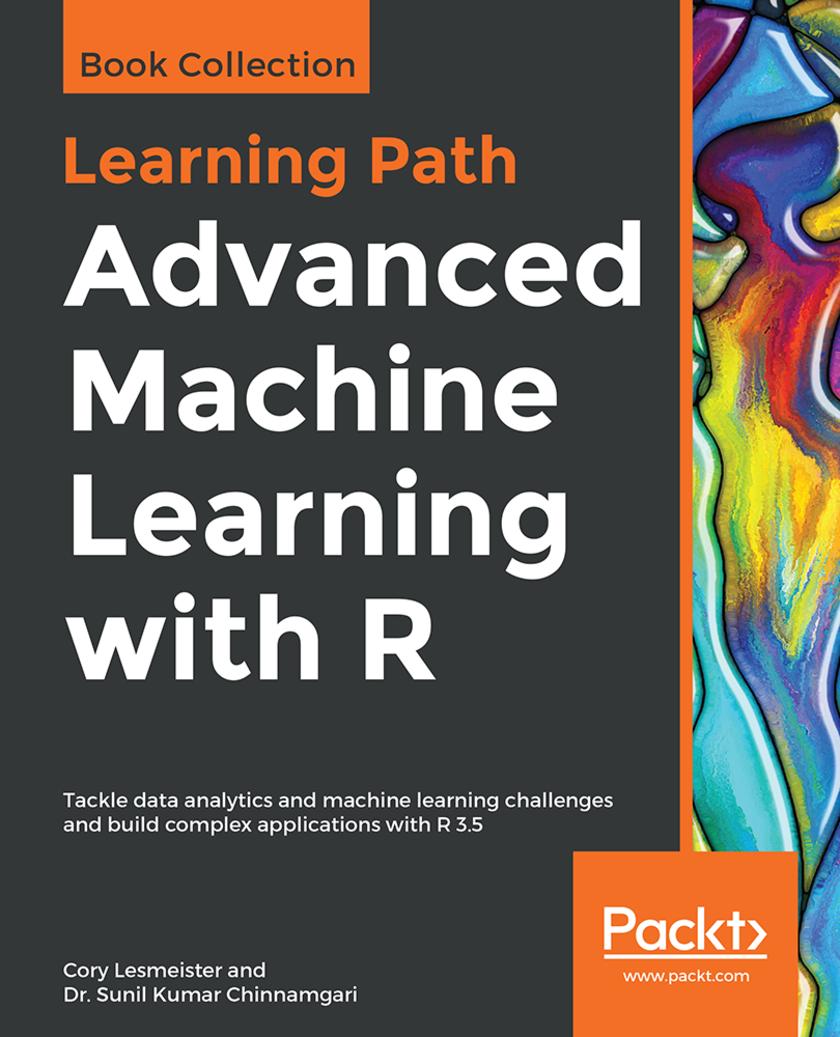
Advanced Machine Learning with R
¥88.28
Master machine learning techniques with real-world projects that interface TensorFlow with R, H2O, MXNet, and other languages Key Features * Gain expertise in machine learning, deep learning and other techniques * Build intelligent end-to-end projects for finance, social media, and a variety of domains * Implement multi-class classification, regression, and clustering Book Description R is one of the most popular languages when it comes to exploring the mathematical side of machine learning and easily performing computational statistics. This Learning Path shows you how to leverage the R ecosystem to build efficient machine learning applications that carry out intelligent tasks within your organization. You'll tackle realistic projects such as building powerful machine learning models with ensembles to predict employee attrition. You'll explore different clustering techniques to segment customers using wholesale data and use TensorFlow and Keras-R for performing advanced computations. You’ll also be introduced to reinforcement learning along with its various use cases and models. Additionally, it shows you how some of these black-box models can be diagnosed and understood. By the end of this Learning Path, you’ll be equipped with the skills you need to deploy machine learning techniques in your own projects. This Learning Path includes content from the following Packt products: * R Machine Learning Projects by Dr. Sunil Kumar Chinnamgari * Mastering Machine Learning with R - Third Edition by Cory Lesmeister What you will learn * Develop a joke recommendation engine to recommend jokes that match users’ tastes * Build autoencoders for credit card fraud detection * Work with image recognition and convolutional neural networks * Make predictions for casino slot machine using reinforcement learning * Implement NLP techniques for sentiment analysis and customer segmentation * Produce simple and effective data visualizations for improved insights * Use NLP to extract insights for text * Implement tree-based classifiers including random forest and boosted tree Who this book is for If you are a data analyst, data scientist, or machine learning developer this is an ideal Learning Path for you. Each project will help you test your skills in implementing machine learning algorithms and techniques. A basic understanding of machine learning and working knowledge of R programming is necessary to get the most out of this Learning Path.

The Complete Kubernetes Guide
¥88.28
Design, deploy, and manage large-scale containers using Kubernetes Key Features * Gain insight into the latest features of Kubernetes, including Prometheus and API aggregation * Discover ways to keep your clusters always available, scalable, and up-to-date * Master the skills of designing and deploying large clusters on various cloud platforms Book Description If you are running a number of containers and want to be able to automate the way they’re managed, it can be helpful to have Kubernetes at your disposal. This Learning Path guides you through core Kubernetes constructs, such as pods, services, replica sets, replication controllers, and labels. You'll get started by learning how to integrate your build pipeline and deployments in a Kubernetes cluster. As you cover more chapters in the Learning Path, you'll get up to speed with orchestrating updates behind the scenes, avoiding downtime on your cluster, and dealing with underlying cloud provider instability in your cluster. With the help of real-world use cases, you'll also explore options for network configuration, and understand how to set up, operate, and troubleshoot various Kubernetes networking plugins. In addition to this, you'll gain insights into custom resource development and utilization in automation and maintenance workflows. By the end of this Learning Path, you'll have the expertise you need to progress from an intermediate to an advanced level of understanding Kubernetes. This Learning Path includes content from the following Packt products: * Getting Started with Kubernetes - Third Edition by Jonathan Baier and Jesse White * Mastering Kubernetes - Second Edition by Gigi Sayfan What you will learn * Download, install, and configure the Kubernetes code base * Create and configure custom Kubernetes resources * Use third-party resources in your automation workflows * Deliver applications as standard packages * Set up and access monitoring and logging for Kubernetes clusters * Set up external access to applications running in the cluster * Manage and scale Kubernetes with hosted platforms on Amazon Web Services (AWS), Azure, and Google Cloud Platform (GCP) * Run multiple clusters and manage them from a single control plane Who this book is for If you are a developer or a system administrator with an intermediate understanding of Kubernetes and want to master its advanced features, then this book is for you. Basic knowledge of networking is required to easily understand the concepts explained.




 购物车
购物车 个人中心
个人中心



